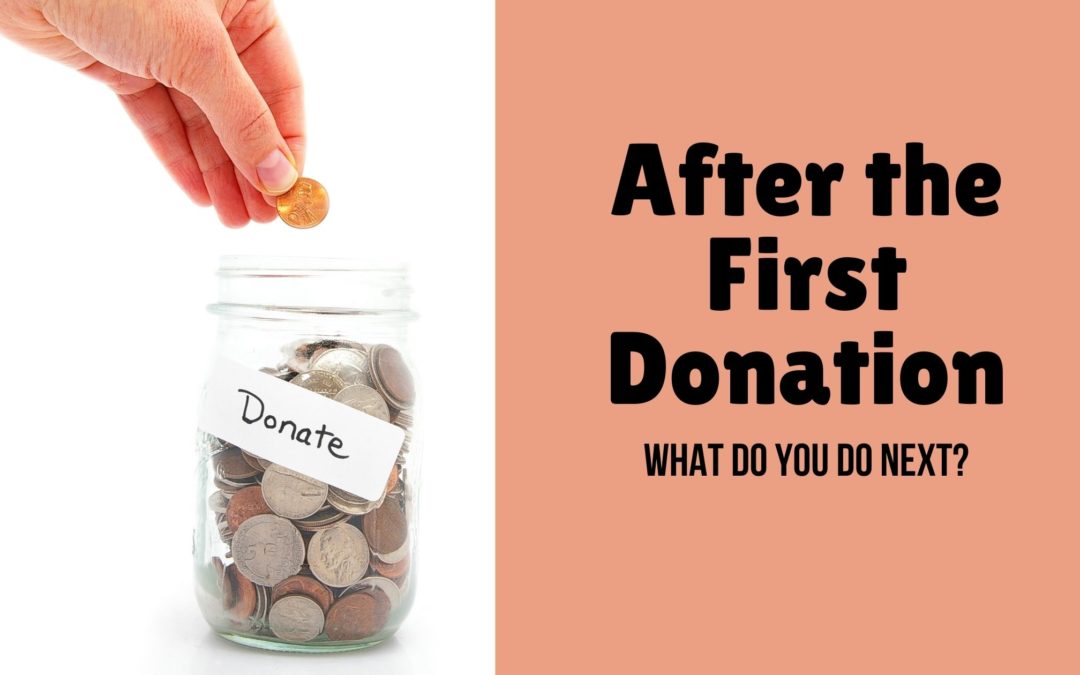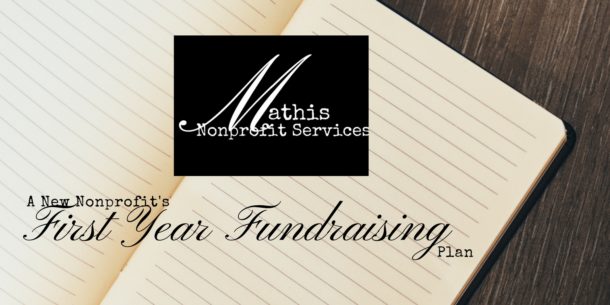Tuesday night I watched the season premiere of The Bachelorette. I watch about every other season (sometimes longer) simply because I get burned out on the drama and it takes that long for me to get curious again. If you haven’t watched, a single woman has about 25 guys to date and decide if they will become her husband. Of course, everyone says they are in it for love…
… but they aren’t always. Enter the drama.
I digress.
They always have an episode titled After the Rose close to the end of the season. Dumped men come back and ask why and tears flow. Some come back to just say I’m doing well without you.
This got me thinking…
We talk a lot about getting donations but not about After the Donation. I tell you all the time that stewarding donors is important but what does that look like in reality? So, today I’m giving you the first three steps every nonprofit should take after the first donation to help them say yes the next time you ask them for a donation.
1. Send a Thank You
It shouldn’t be something I have to say but sending the thank you note (AKA the acknowledgment letter) is always the first thing you do. Why? 1) It’s the polite thing to do to say thank you for the donor’s gift; 2) Done right, it doubles as their tax receipt; 3) It gives you another chance to talk about the impacts their donation has on your mission. Generally, you would send the thank you letter by the same method it was received if the donor didn’t specify. So, if they mailed you the donation, mail their receipt. If they donated online, email them a receipt.
2. Put the Donor on Your Automated Email Donor List
Hopefully, this is an automated process but if it isn’t, make a task on your to-do list to do this daily or weekly at worst. You want them in your automated emails as soon as possible. Why? You don’t want them to lose contact and connection with your organization. In my experience, the person who just gave is more likely to give than any other time so I don’t like to give them time to cool to the organization.
3. Send the Donor Through an Email Sequence
Your donor should receive emails from you once a week for several weeks. This sequence is called the Welcome emails. The purpose of the Welcome emails is to acclimate your donor with your cause and culture. It should help them bond further with your organization. I recommend this sequence of emails:
Email #1: Origin Story
This email will tell your organization’s origin story. Whether it’s your Founder’s personal story or just how the organization came to be, this story should connect with your Ideal Donor.
Email #2: Value
In email #2, you will talk about the most important value your organization holds dear and why you believe so deeply in this value. You should be able to find your values in your mission, vision, and values statements.
Email #3: Facebook Page/Blog
Email #3 will invite them to like your Facebook Page or if you have a blog, then to check out your blog. This will help you continue the conversation outside of email and (hopefully) more often than your email. If you have more than one social media channel, keep this email with only Facebook. We aren’t trying to overwhelm them. We want them to take micro-actions like liking social media to get them used to clicking links.
Email #4: Value
Just like in the previous value emails, you will pick a value, share your organization’s why for the value, and what the world would look like if everyone acted on that value. Paint a transformational picture here.
Email #5: FB Group/Other Social Media
If you have a Facebook Group for loyal donors, invite them to it in this email. Your goal is to get them engaged with you outside of email so you can continue the conversation more frequently and on their terms. If you don’t have a group, then invite them to another social media channel. If you don’t have any more social channels, omit this email.
Email #6: Value
Omit this email if you don’t have three values. Otherwise do what you’ve been doing with the other value emails.
Email #7: How You Can Help
This is where you let the donor know about your services and your needs outside of donating money. If you have an in-kind list you need to be filled or a volunteer opportunity, then ask in this email. DO NOT ASK FOR MONEY here.
After your donor completes this sequence, they will go into your weekly/monthly/quarterly donor communications list.
These first three steps will help your donor learn more about your nonprofit as it builds connections with your donors. The next time you ask for money, they will be more receptive to your ask. Automating as many of these steps as possible will save you time.
If you want more ideas on stewarding donors or how to write an appeal, join us in Nonprofit Nation’s Fundraising Success Path.


 Most nonprofit leaders lay awake at night trying to figure out how to fund their mission.
Hi! I'm Alesha.
I teach sustainable fundraising in a way that they can take action today so they can serve their clients.
I can help you move from just getting started funding your new nonprofit to gaining confidence in your fundraising and building relationships to knowing what works for your organization and looking at the infinite game when it comes to funding. I’ve worked with nonprofit Founders and written the book I HAVE MY 501(C)3! NOW WHAT?!? Your Blueprint to Starting Your Nonprofit Without Being the Sole Funder that lays the foundations for funding in a new nonprofit.
I’ve worked in Development (Fundraising) Departments in large organizations and I know the no cost, low-cost methods they use to bring in funding. I bring those sound strategies to the nonprofits I serve.
Most nonprofit leaders lay awake at night trying to figure out how to fund their mission.
Hi! I'm Alesha.
I teach sustainable fundraising in a way that they can take action today so they can serve their clients.
I can help you move from just getting started funding your new nonprofit to gaining confidence in your fundraising and building relationships to knowing what works for your organization and looking at the infinite game when it comes to funding. I’ve worked with nonprofit Founders and written the book I HAVE MY 501(C)3! NOW WHAT?!? Your Blueprint to Starting Your Nonprofit Without Being the Sole Funder that lays the foundations for funding in a new nonprofit.
I’ve worked in Development (Fundraising) Departments in large organizations and I know the no cost, low-cost methods they use to bring in funding. I bring those sound strategies to the nonprofits I serve.